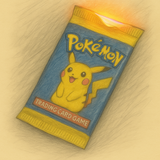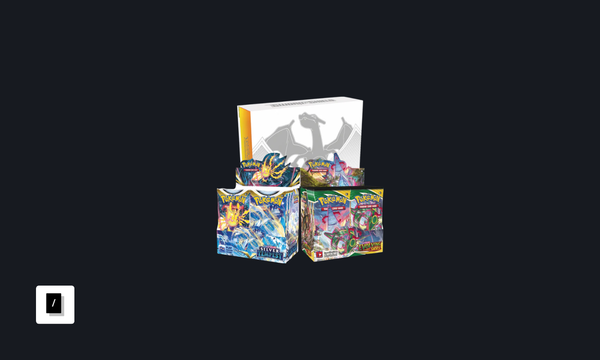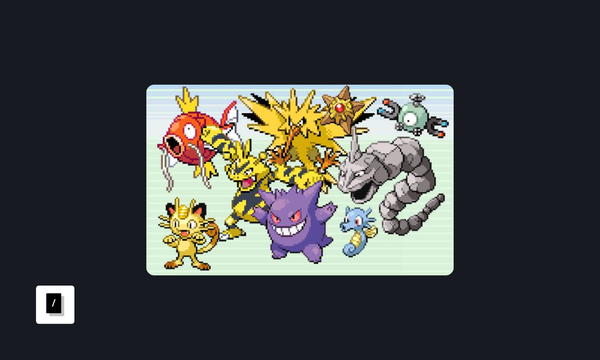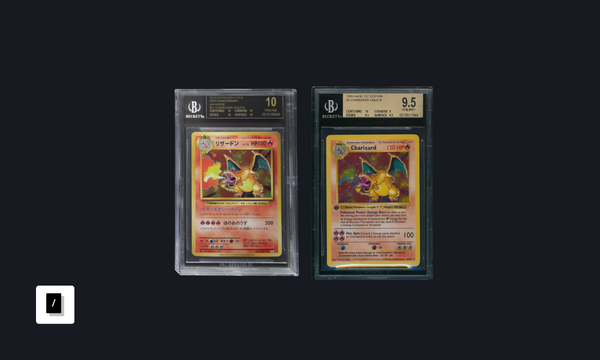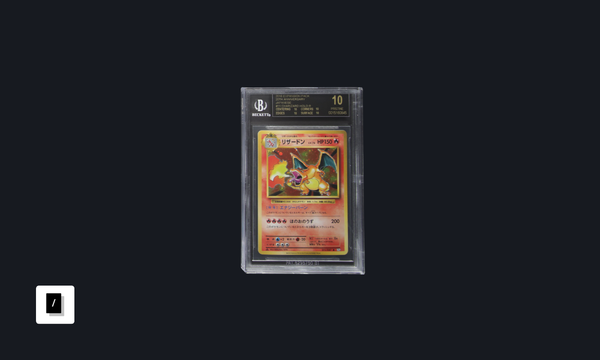Pokemon Card Portfolio Strategy

An analysis of the Pokémon Trading Card Game (TCG) market indicates a history of significant value appreciation, with certain asset classes outperforming traditional investments like the S&P 500. However, capitalizing on this potential requires a disciplined, data-driven 10-year strategy that balances the stability of vintage assets with the growth potential of modern products. This strategy is predicated on diversification across eras and product types, a deep understanding of scarcity drivers, meticulous cost management, and a comprehensive risk mitigation framework.
Strategic Portfolio Allocation Framework
A diversified portfolio is crucial for mitigating risk and capturing growth across different market segments. An allocation of 5-10% of an investor's total portfolio toward collectibles is a common recommendation. The following allocation model targets long-term growth by blending established "blue-chip" assets with higher-risk, high-reward modern products.
Recommended 10-Year Portfolio Allocation Model:
| Category | Sub-Category | Allocation % | Rationale |
|---|---|---|---|
| Vintage Assets | Graded Singles | 30% | Stable, long-term appreciation driven by nostalgia and established scarcity. |
| Sealed Booster Boxes | 20% | Considered a "blue-chip" deflationary asset class with proven, steady growth and lower volatility than singles. | |
| Modern Assets | Sealed Products | 30% | Higher growth potential driven by set popularity and chase cards; offers opportunities to acquire assets at or near MSRP. |
| Graded Singles | 20% | Targets high-demand "chase" cards with potential for rapid appreciation, balancing the portfolio's risk profile. |
Product Type and Language Considerations
- Sealed vs. Graded Singles: Sealed products are often compared to ETFs—simple, easy investments that generate respectable returns over time and are considered a safer, deflationary asset class. Graded singles offer the potential for higher, faster returns through grading arbitrage but are more volatile and require greater market knowledge.
- English vs. Japanese Products: The investment potential varies by product type. For modern sealed products, English sets like Evolving Skies have demonstrated stronger returns than their Japanese counterparts (Eevee Heroes) due to a lower frequency of reprints, which creates greater secondary market scarcity. Conversely, Japanese single cards are noted for superior print quality, which can lead to higher grading success rates (e.g., an 86.6% chance for a PSA 10 on a Japanese 151 Charizard vs. 35.2% for English). Japanese-exclusive promotional cards and special sealed products, like Gym Boxes, also represent a unique asset class with strong performance due to their limited availability [www.pricecharting.com/game/pokemon-japanese-eevee-heroes/gym-box].
Vintage Asset Class Analysis (Pre-2010)
Vintage assets form the stable foundation of the portfolio, demonstrating consistent long-term growth with a historical Compound Annual Growth Rate (CAGR) between 20-40% for rare cards.
Tier 1: Blue-Chip Graded Singles (PSA 10)
These are the "holy grail" assets of the hobby, characterized by extreme rarity, iconic status, and six-figure valuations.
- 1st Edition Base Set Holo Charizard #4 (PSA 10): The definitive benchmark asset. The population is extremely low, with only 121-124 copies known to be in PSA 10 condition. Its value grew from approximately $18,900-$20,000 in 2018 to a record of $420,000 in March 2022. Recent sales in 2024 have ranged from $262,600 to $347,600.
- 1st Edition Neo Genesis Holo Lugia #9 (PSA 10): A key benchmark from the second generation of Pokémon, valued for its artwork and even greater scarcity than the Charizard, with a PSA 10 population of only 41-45. Its price escalated from ~$1,000 in mid-2019 and ~$2,500 in 2018 to a peak of $129,000 in November 2020. A more recent sale in June 2024 was recorded at $28,200.
Tier 2: Accessible High-Grade Holos (PSA 8-9)
This tier offers exposure to iconic vintage cards at more accessible price points while still providing strong historical returns.
- 1st Edition Base Set Charizard (PSA 9 & PSA 8):
- PSA 9: Valued at $1,200-$1,500 in 2015-2016, rising to $5,200-$6,300 by 2019. Its current market price is approximately $26,000.
- PSA 8: Valued at $700-$800 in 2015-2016, its current market price is approximately $15,635.
- 1st Edition Base Set Blastoise & Venusaur (PSA 9):
- Blastoise (PSA 9): Sales in 2020 indicated prices around $3,000 after the market boom began. In 2025, sales have fluctuated between $3,000 and $5,371.
- Venusaur (PSA 9): While pre-2020 data is scarce, recent 2025 sales have ranged from $2,750 to $5,371.
Tier 3: Undervalued Vintage & Sealed Products
This category targets assets with strong fundamentals but potentially overlooked market value, offering a higher potential for alpha.
- Undervalued Graded Categories: Focus on cards whose value is driven by condition scarcity and cultural significance rather than just inherent rarity. Key areas include:
- WOTC Promos: Cards like the movie promo Dragonite #5 are historically significant and remain affordable in high grades (~$600 for a PSA 10).
- Japanese Promos: Early Japanese exclusive promos are considered severely underrated, with historically significant cards available for low prices.
- 1st Edition Non-Holos (PSA 10): Common and uncommon cards from sets like Base Set can command high prices in PSA 10 due to extreme condition scarcity. For example, a PSA 10 1st Edition Base Set Bulbasaur is valued at ~$2,200, and a Wartortle is ~$2,000. A complete non-holo PSA 10 set sold for over $10,000.
- Gold Star & Shining Pokémon: These cards from the Neo and ex-eras have low population counts and unique artwork, making them strong long-term holds.
- Vintage Sealed Booster Boxes: These are considered a cornerstone vintage investment. Historical data shows steady, significant appreciation.
- 1st Ed. Base Set: A box sold for $60,200 in November 2018. Current valuations exceed $200,000.
- Jungle, Fossil, Team Rocket (1st Ed.): These boxes were available for $200-$1,200 in the 2015-2018 period. By late 2024 and 2025, their values have climbed to $10,000-$20,000+ per box.
Modern Asset Class Analysis (Post-2020)
Modern assets offer higher growth potential but come with increased volatility and risks, particularly from reprints. The strategy is to identify sets and cards with characteristics that suggest long-term "vintage" appeal. Modern cards have shown a CAGR of 5-20%.
Identifying High-Potential Modern Assets
The most promising modern assets share key traits: iconic Pokémon, unique and desirable artwork (especially Alternate or Special Illustration Rares), limited print runs, and special set status (e.g. anniversary or holiday sets).
- Modern "Blue-Chip" Singles:
- Umbreon VMAX Alternate Art ("Moonbreon") from Evolving Skies: The definitive modern grail card, experiencing a 300% price increase in 2023. PSA 10 English versions have sold for $2,400-$3,490 in 2025, while Japanese PSA 10s have sold for $2,999-$3,473.
- Giratina V Alternate Art from Lost Origin: Considered one of the best artworks of its era, making it a top chase card and driving the value of the set.
- Lugia V Alternate Art from Silver Tempest: Initially divisive, the sentiment around this card's artwork has grown, and it is now considered an undervalued blue-chip with a raw price around $283 and a PSA 10 price under $600.
- Charizard V Alternate Art from Brilliant Stars: A highly sought-after Charizard card from a fan-favorite set that introduced the valuable "Trainer Gallery" subset.
- Mew ex Special Illustration Rare ("Bubble Mew") from Paldean Fates: The top chase card from a popular special set, considered by some to be the second most iconic card of the modern era after Moonbreon.
- High-Potential Sealed Booster Boxes: Analysis shows significant performance disparities between sets.
- Top Performers (Sword & Shield): Based on annualized ROI from a release price of ~$100, top sets include Evolving Skies (110.53%), Lost Origin (66.41%), and Brilliant Stars (42.11%). These sets are out of print and feature strong chase cards, driving their value.
- Top Performers (Scarlet & Violet - as of early 2025): Strong early performers include Paradox Rift, Paldean Fates, and 151, all driven by strong chase cards and/or nostalgia. Prismatic Evolutions and Destined Rivals are also showing very strong early demand.
- Underperformer Case Study (Rebel Clash): Released in May 2020, this set has appreciated far slower than its contemporaries, with an annualized ROI of 19.52%. The lack of a major, high-value chase card has limited its investment appeal.
- Sealed Product Format Comparison (Evolving Skies):
- Booster Boxes: The benchmark for sealed investing, offering the best pack value and liquidity. The Evolving Skies booster box showed a 112.16% annualized ROI from its release price of $120.
- Pokémon Center Elite Trainer Boxes (PC ETBs): These exclusives contain more packs (10 vs. 8) and often a unique promo card, making them highly sought-after. The Evolving Skies PC ETB has shown a market price trend of +787%.
- Standard Elite Trainer Boxes (ETBs): While still appreciating well (+529% to +573% trend for Evolving Skies), they generally underperform PC ETBs and Booster Boxes on a per-pack basis.
Operational Execution and Cost Management
A successful investment strategy must account for all ancillary costs associated with acquiring, maintaining, and liquidating assets.
Grading Strategy & Costs
- Grading Company Selection: The choice of grading company significantly impacts resale value.
- PSA: Commands the highest market premium for most cards, especially vintage, and is considered the industry standard. A PSA 10 is the benchmark for "Gem Mint".
- BGS: Its "Black Label 10" grade for a flawless card can sell for multiples of a PSA 10, particularly for modern cards. A BGS 10 "Moonbreon" sold for over 400% the value of a PSA 10 ($7,621 vs $1,400). However, a BGS 9.5 generally sells for less than a PSA 10.
- CGC: Gaining market share with a reputation for strict grading and faster turnaround times. While values have historically lagged, the gap is narrowing. A CGC Pristine 10 can command a premium over a PSA 10, while a standard CGC 10 may sell for slightly less.
- Costs: Grading fees typically range from $15 to $30 per card for standard services, with higher tiers for more valuable cards.
Storage, Insurance, and Transaction Costs
- Storage: Proper storage is crucial to preserve condition. This includes basic supplies (sleeves, binders) and, for high-value sealed products, protective acrylic cases ($20-$25 per unit). For large collections, professional climate-controlled storage can range from $70 to $710 per month, though services like Fanatics Collect offer free vaulting for items valued over $50.
- Insurance: Essential for any high-value collection. Annual premiums for specialty collectibles insurance typically run 1-2% of the collection's total appraised value. For a $100,000 collection, this could be $640-$900 per year.
- Transaction Fees: Liquidation costs can be substantial. Major auction houses like Heritage Auctions may charge a seller's premium of 10-15%, while platforms like Fanatics Collect (formerly PWCC) have fees around 6-8% or more, depending on the item and service. eBay fees are capped but can still be significant.
Risk Management and Exit Strategy
A 10-year horizon necessitates a robust framework for managing market risks and planning for an eventual exit.
Key Market Risks
- Market Correction & Saturation: The Pokémon Company has dramatically increased production, printing 9.7 billion cards in a single recent fiscal year, representing 18.3% of all cards ever made. This oversupply creates downward price pressure and increases the risk of a market correction, especially for modern products.
- Reprints: The primary risk for modern sealed products. Official reprints can cause prices to drop significantly. The Hidden Fates ETB, for example, fell from ~$350 to ~$100 after a mass reprint before beginning its recovery. The Celebrations Ultra-Premium Collection saw its value dip from a high of over $400 in late 2023 to ~$331 after multiple production waves, before beginning a recovery.
- Counterfeits and Resealing: A significant threat, particularly for high-value vintage sealed products. Authentication by a reputable third-party service like PSA (for packs) or specialists like Ripping Vintage Packs (RVP) for booster boxes is critical for risk mitigation.
- Shifting Generational Interest: While millennials and Gen Z currently drive the market through nostalgia, long-term demand depends on younger generations. The entry of Gen Alpha collectors suggests long-term resilience. However, some analysis indicates younger collectors may favor the more intricate artwork of modern cards over the simpler designs of vintage cards, a trend that could impact long-term vintage demand.
Exit Strategy & Tax Implications
- Liquidity and Sales Channels: High-end Pokémon assets are illiquid with a niche buyer pool. Liquidation can be challenging and time-consuming. For premier assets (>$10,000), using major auction houses like Heritage Auctions or Fanatics Collect is advised to reach qualified buyers. Mid-tier assets can be sold on platforms like eBay, which offers an authenticity guarantee program.
- Tax Liabilities: This is a critical consideration often overlooked by investors. In the United States, collectibles are subject to a special capital gains tax rate.
- Long-Term Capital Gains: For assets held over one year, profits are taxed at the investor's ordinary income tax rate, up to a maximum of 28%. This is significantly higher than the 0%, 15%, or 20% rates for traditional investments like stocks.
- Short-Term Capital Gains: For assets held one year or less, profits are taxed as ordinary income, with rates potentially as high as 37%.
- Additional taxes, such as the 3.8% Net Investment Income Tax and state-level capital gains taxes, may also apply, further impacting net returns. Accurate record-keeping of the cost basis (purchase price plus related fees) is essential for calculating and minimizing tax liabilities.

